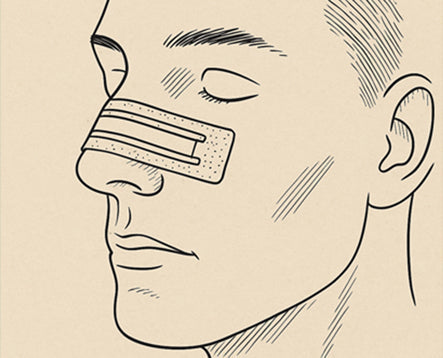Typical side effects of nasal patches
 Skin irritations
Skin irritations
The most common side effect is skin reactions . These include:
- Redness after removal
- dry or irritated areas
- rarely small pimples
These reactions are usually temporary and subside after a short time. However, the choice of patch can make a big difference.
Allergic reactions
Some bandages contain latex or certain adhesives that can trigger allergies . Typical symptoms include itching, swelling, or persistent skin redness.
Problems removing
If a plaster is removed too quickly, it can lead to:
- skin abrasions,
- minor irritations or
- an unpleasant feeling of tension
It is more gentle to remove the patches slowly, preferably after showering or washing your face, when the skin is warm and slightly damp.
Rare side effects
In rare cases, more severe reactions such as blisters or persistent skin rashes may occur. In this case, use should be discontinued immediately and a dermatologist should be consulted.
What should you pay attention to when choosing?
- Hypoallergenic – reduces the risk of skin irritation.
- Latex-free – important for allergy sufferers.
- Free from active ingredients – no additives that could cause skin reactions.
- Gentle on the skin – comfortable to wear without any strong feeling of tension.
- Discreet & transparent – unobtrusive design that can be easily integrated into everyday life.
AirStripes: Gentle, skin-friendly, unobtrusive
 An example of nasal patches that meet these criteria are nasal patches from AirStripes :
An example of nasal patches that meet these criteria are nasal patches from AirStripes :
- Hypoallergenic tested – developed for sensitive skin.
- Latex-free – also suitable for allergy sufferers.
- Free of active ingredients – no additives, just material and form.
- Discreet & transparent – barely visible in everyday life.
This makes AirStripes an option for anyone who values skin-friendly and drug-free plasters .
Conclusion
Nasal strips are practical everyday aids – but in some cases, they can cause side effects on the skin . However, with the right choice, risks can be significantly reduced. Those who opt for hypoallergenic, latex-free, and drug-free nasal strips can generally use them without any problems.
With plasters like AirStripes , you choose a discreet and skin-friendly alternative that can be easily integrated into your everyday life – without any unnecessary additives.



